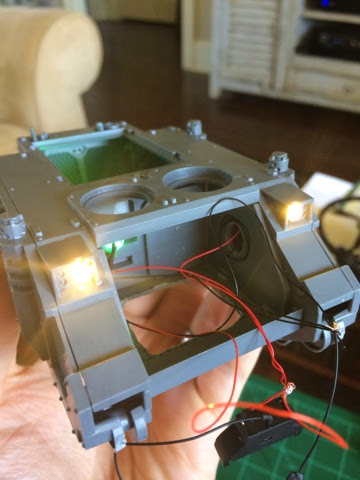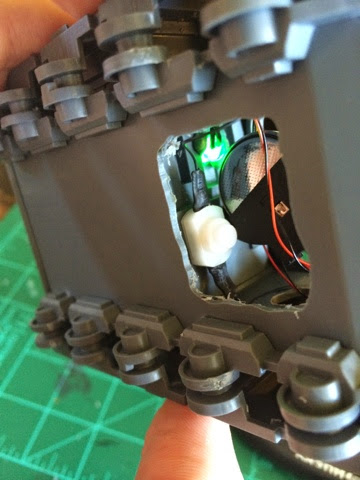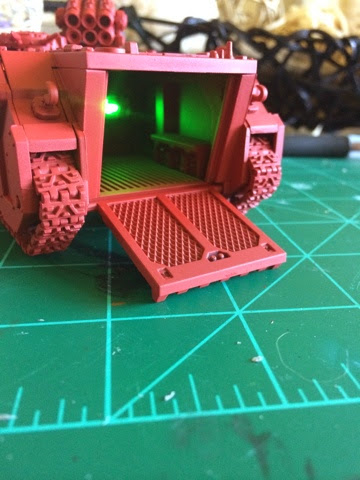Urläg's most loyal followers, his chosen Huscarls, don the ancient Terminator Armor stolen from the armories of the Space Wolves when they turned to Chaos. Over the many hundreds of years, these once magnificent suits have been warped and bent to the will of Chaos - daubed red from their thousands of victims during intense boarding actions and vanguard assaults.
I decided last night I'd complete a unit, hell-bent on accomplishing the daunting task of painting (to completion) a full unit. I chose six terminators, and got to work!
Choosing to assembly-line them was a great decision. I was able to paint them consistently and make them appear to be a cohesive unit, while cutting down on time spent on each model. Being able to focus on one task, say, the brass shoulder trim on each model, really allowed me to speed the process up.
As usual, the can of red citadel spray paint is a miracle worker for my army. It takes out the most tedious step in painting figures, the initial base coat! All I had to do afterward was wash it in a deep red, trim the brass, add metal for gun barrels, various trim colors, eyes, etc, and that's it! A quick once over for the bases and I had an above-average painted unit in a couple of hours. They won't win any contests, but they are certainly to a standard I am very happy with.
The toughest decision was picking a color for my power weapons. Green was my first choice when I painted my first Chaos model, but I've decided I need it to pop more. A bright blue fits the bill, and has the bonus of being an "icy" weapon, fitting of the Space Wolf theme.
Overall I'm pleased with the result, and can't wait to knock out my regular marines next (I painted all the fun stuff first, shame on me). My army is slowly losing it's Hatred: Unpainted curse, and will once more be the scourge of the Van Hassan system!
This also counts as a complete unit for my To-Do list! Hooray, Khorne!
















